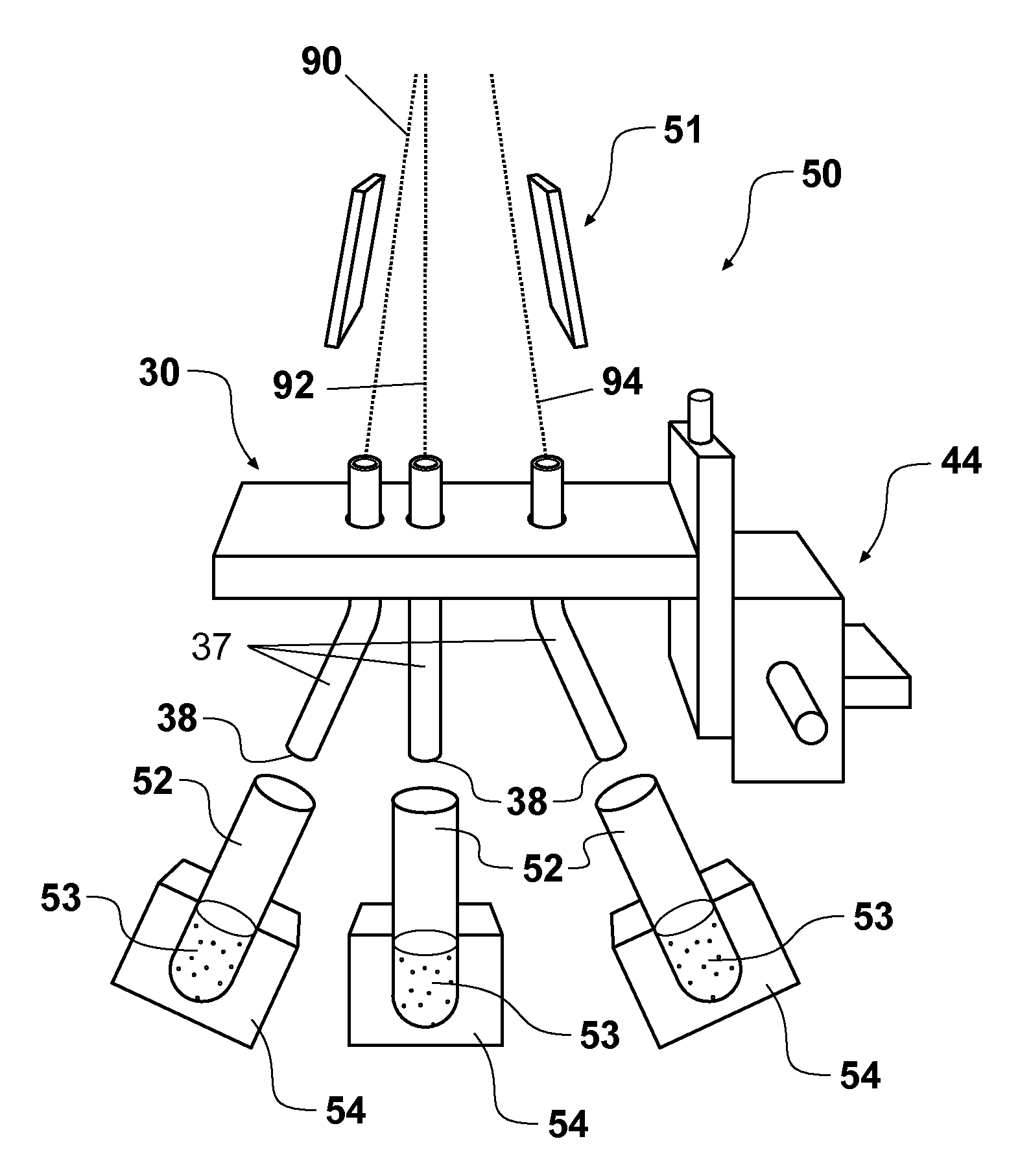Particle separation devices, methods and systems
- Summary
- Abstract
- Description
- Claims
- Application Information
AI Technical Summary
Benefits of technology
Problems solved by technology
Method used
Image
Examples
example
Semen Collection
[0067]Semen from White-tailed deer bucks was collected via electroejaculation and portions of the ejaculate were collected, kept separate, and analyzed based on consistency and color. The portions with the best motility (>˜80%), based on subjective microsope measurements, were extended to approximately 1×109 sperm / ml with Biladyl® or Tris A solution (200 mM Tris, 65.7 mM citric acid, 55.5 mM fructose) containing 20% (v / v) egg yolk and adding 7% (v / v) glycerol for cryopreservation. All the samples were shipped or driven to Sexing Technologies, Navasota, Tex., USA for processing during the first 24 hours after collection. Samples were chilled and maintained between 5-10° C. during transport.
[0068]For semen selection the standards for routine semen preparation and cut-off values for standard semen characteristics for selecting the ejaculates for processing were applied, however deer semen was processed regardless of concentration, determined using the SP1-Cassette, Reag...
PUM
 Login to View More
Login to View More Abstract
Description
Claims
Application Information
 Login to View More
Login to View More - R&D
- Intellectual Property
- Life Sciences
- Materials
- Tech Scout
- Unparalleled Data Quality
- Higher Quality Content
- 60% Fewer Hallucinations
Browse by: Latest US Patents, China's latest patents, Technical Efficacy Thesaurus, Application Domain, Technology Topic, Popular Technical Reports.
© 2025 PatSnap. All rights reserved.Legal|Privacy policy|Modern Slavery Act Transparency Statement|Sitemap|About US| Contact US: help@patsnap.com



